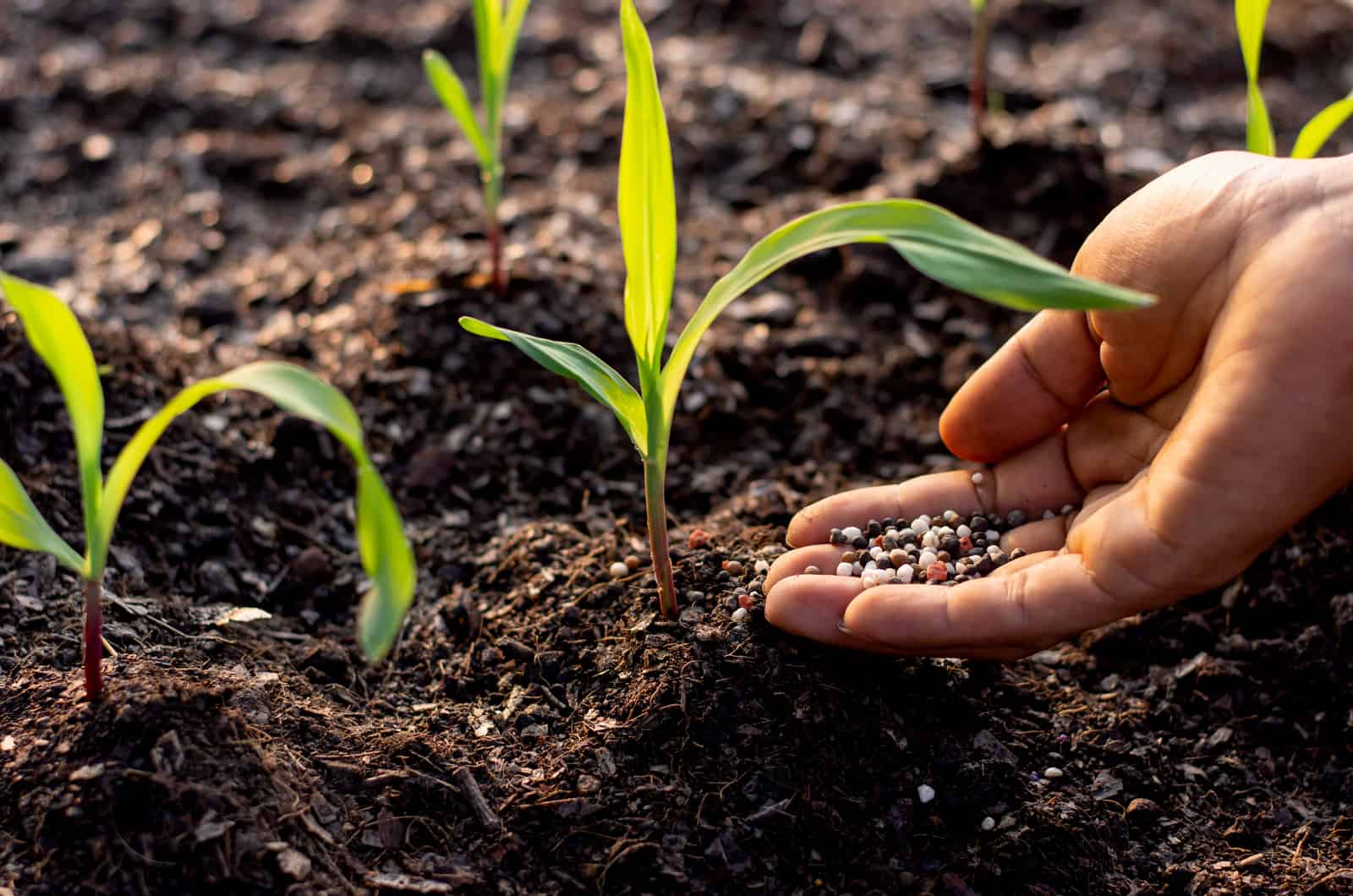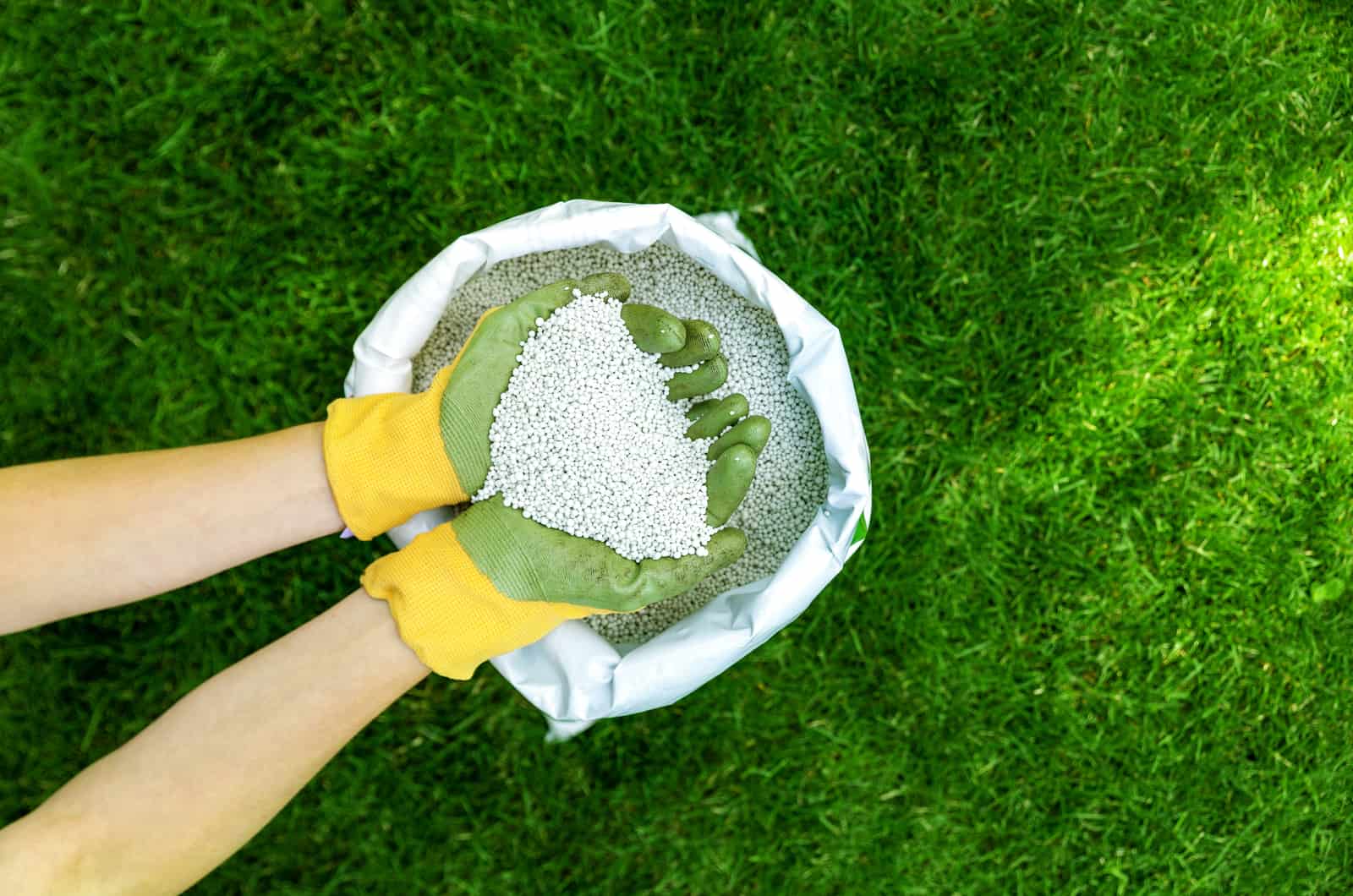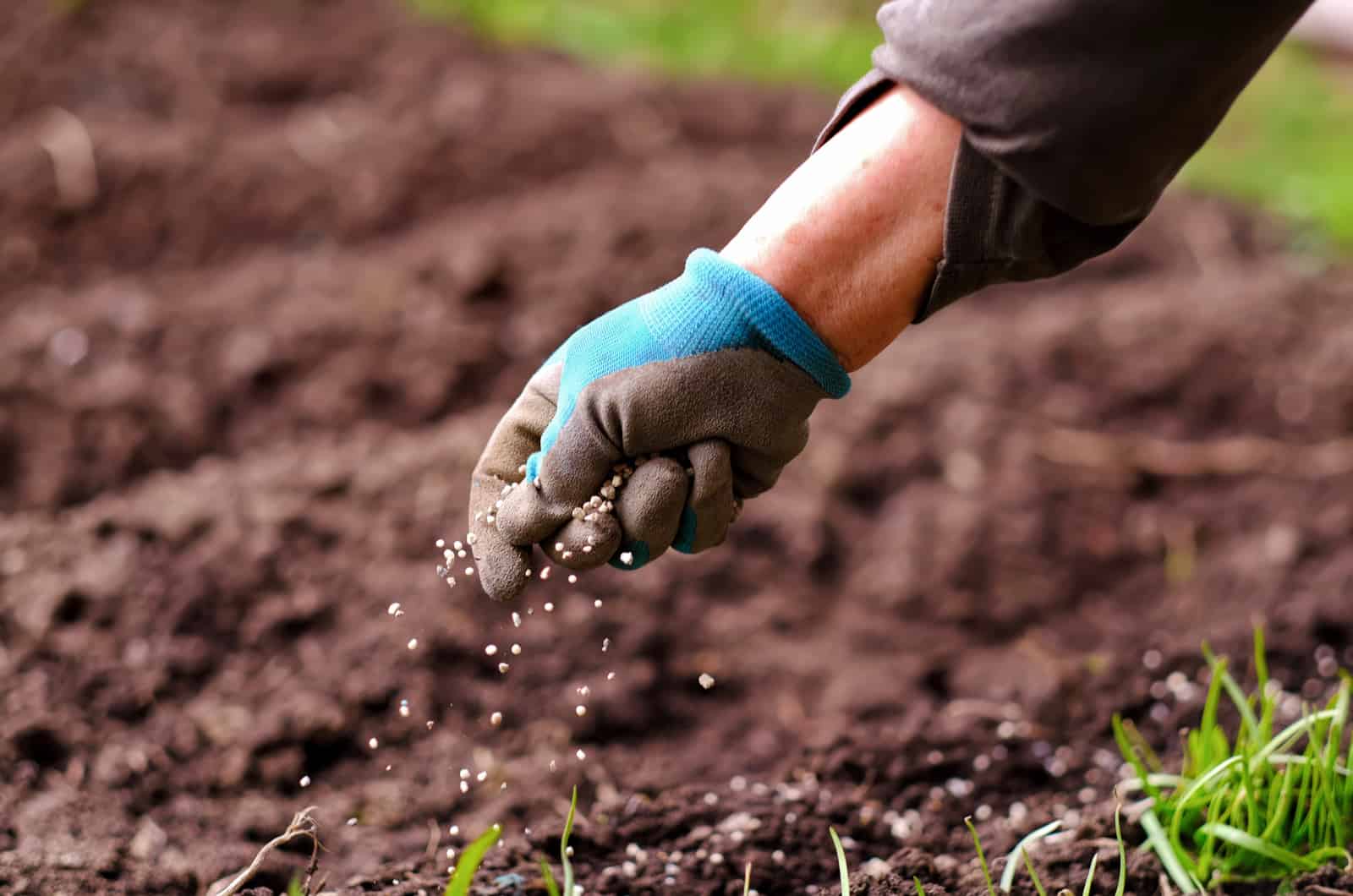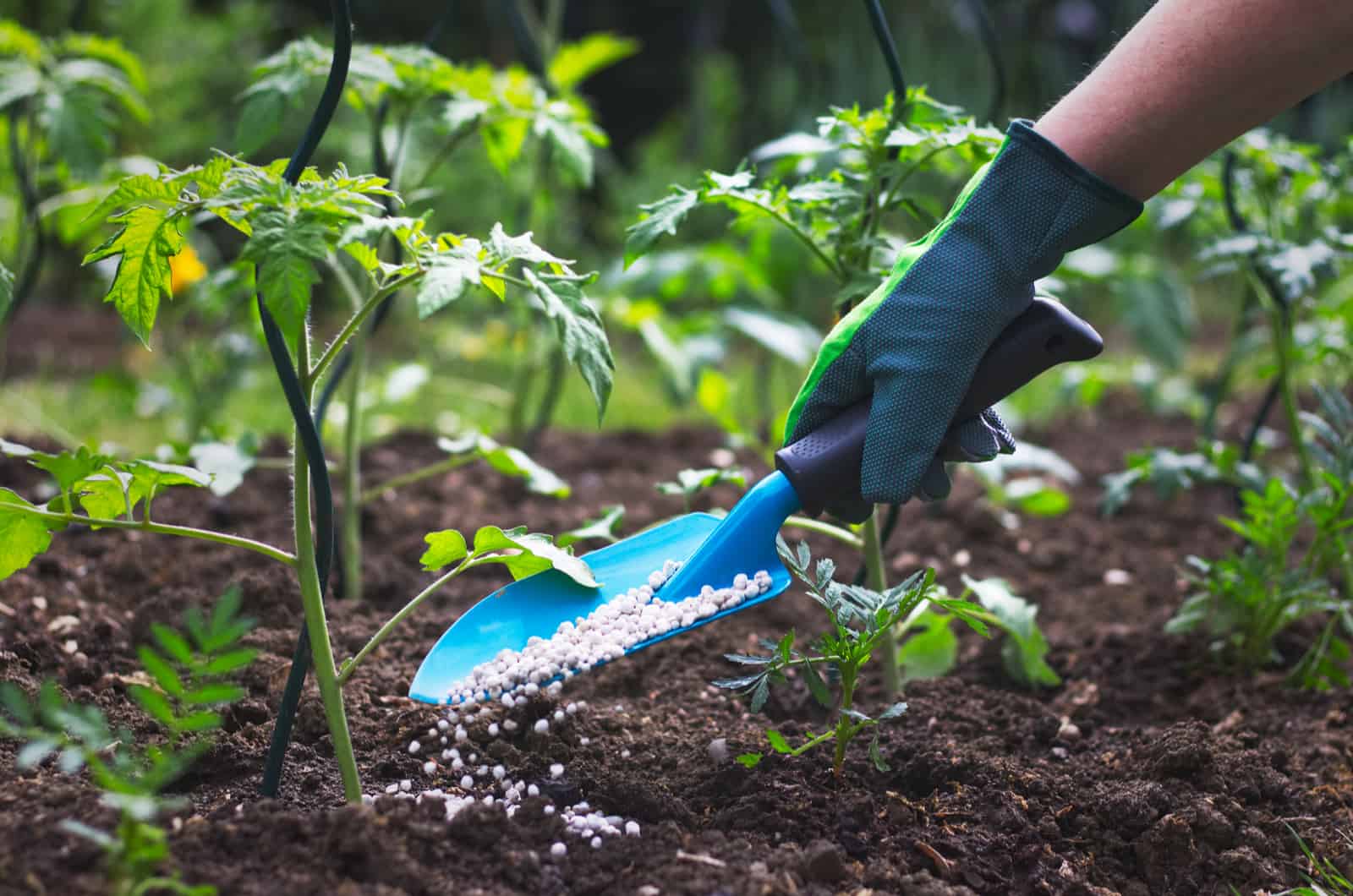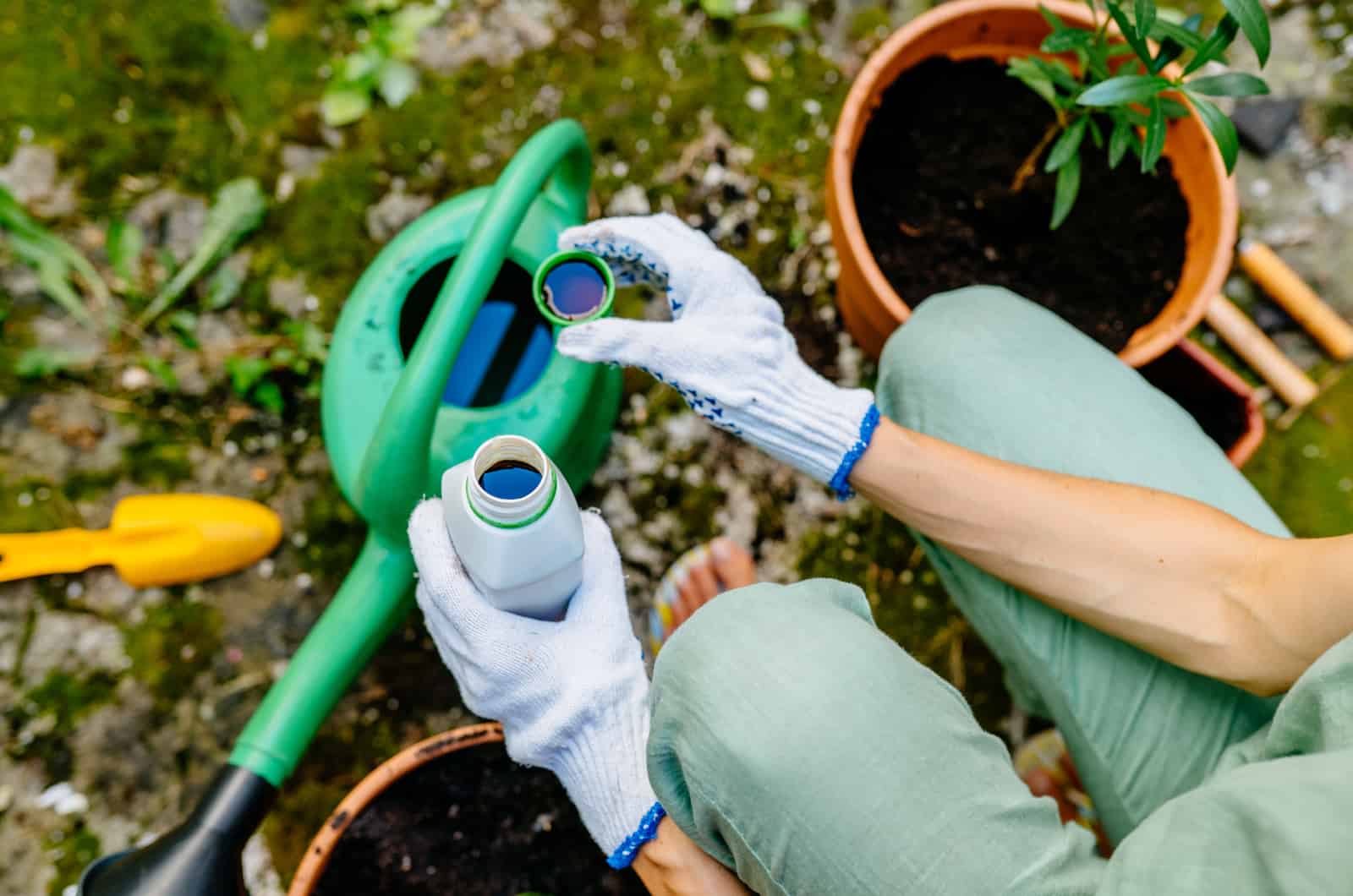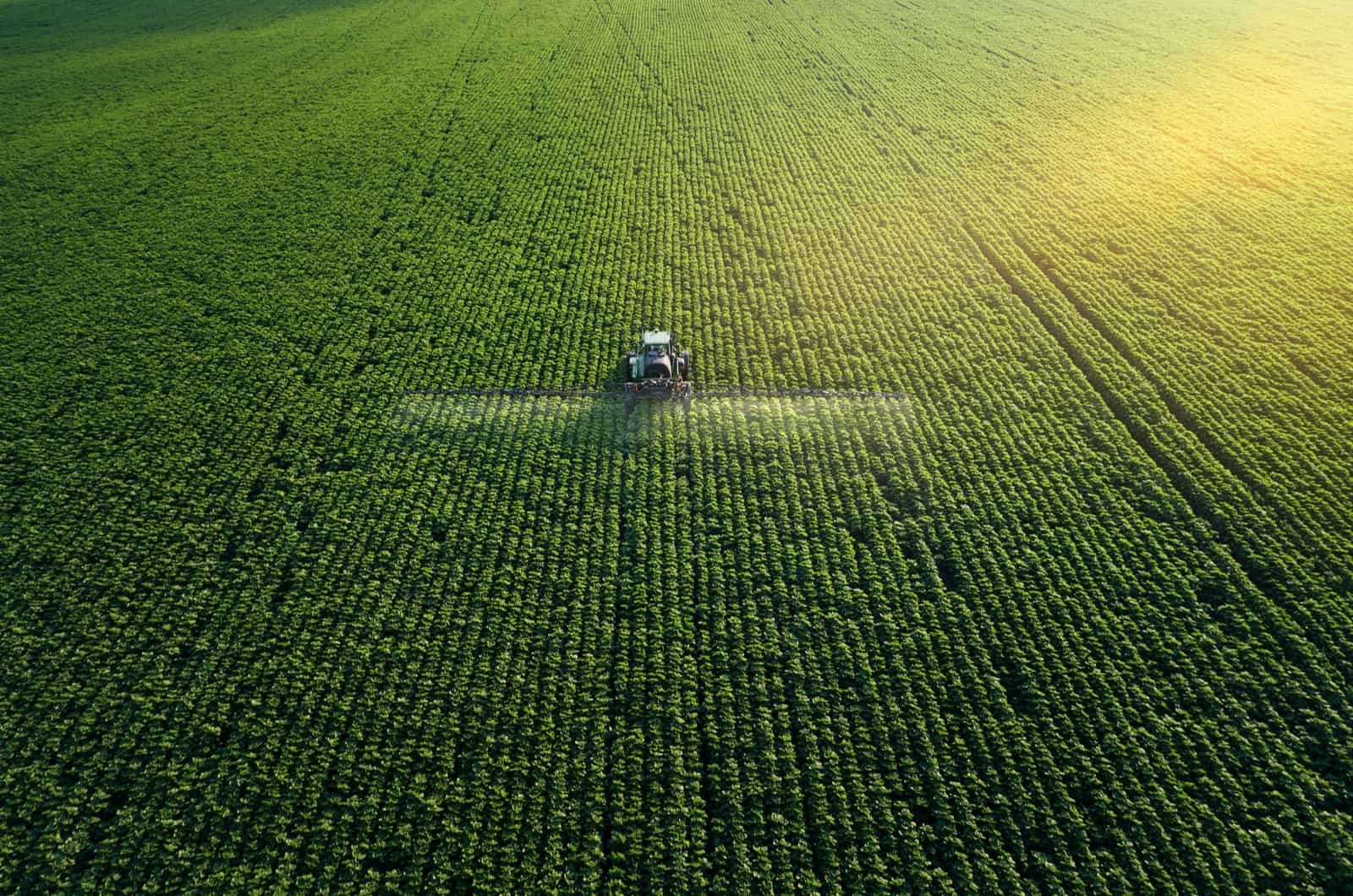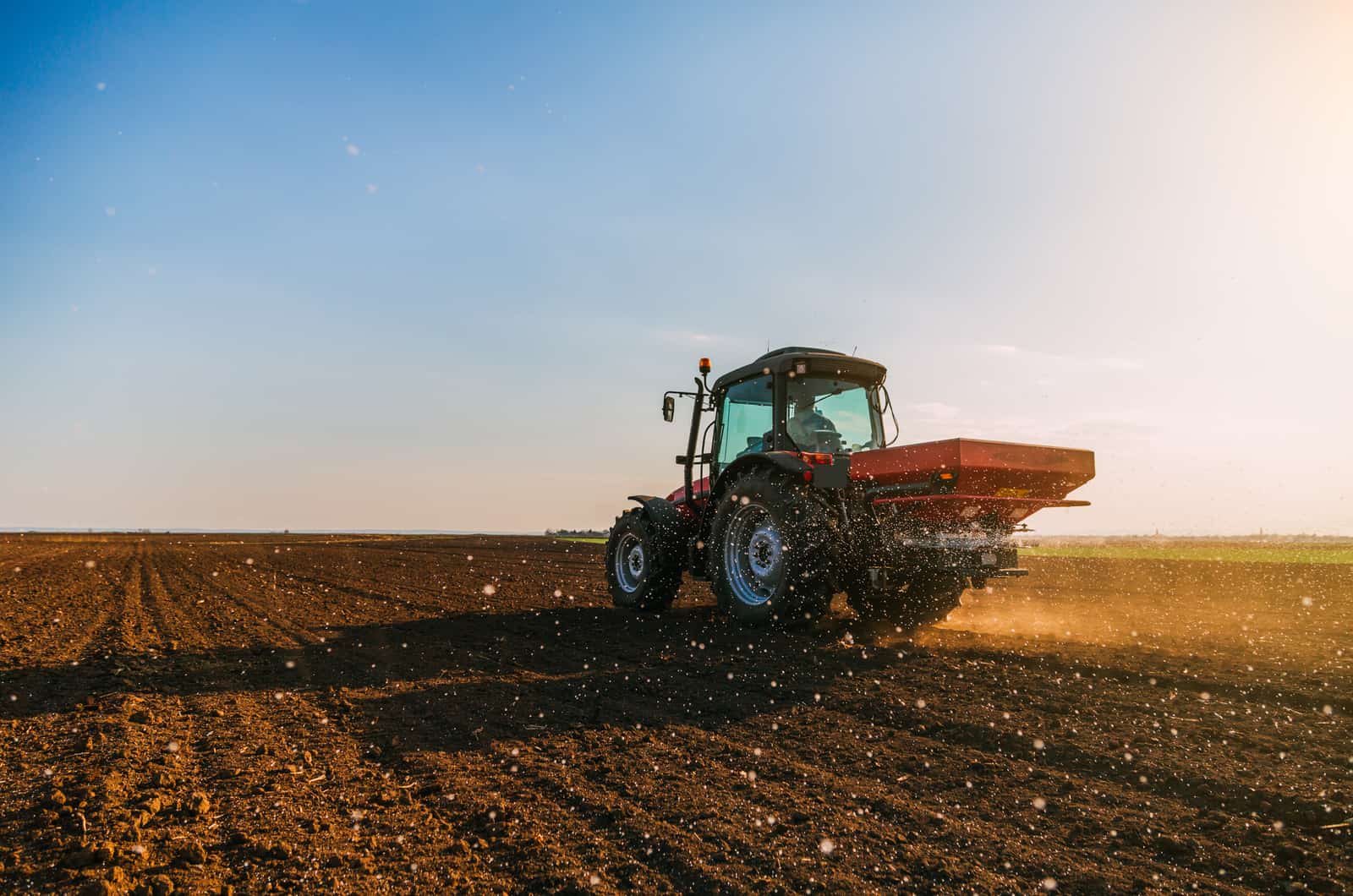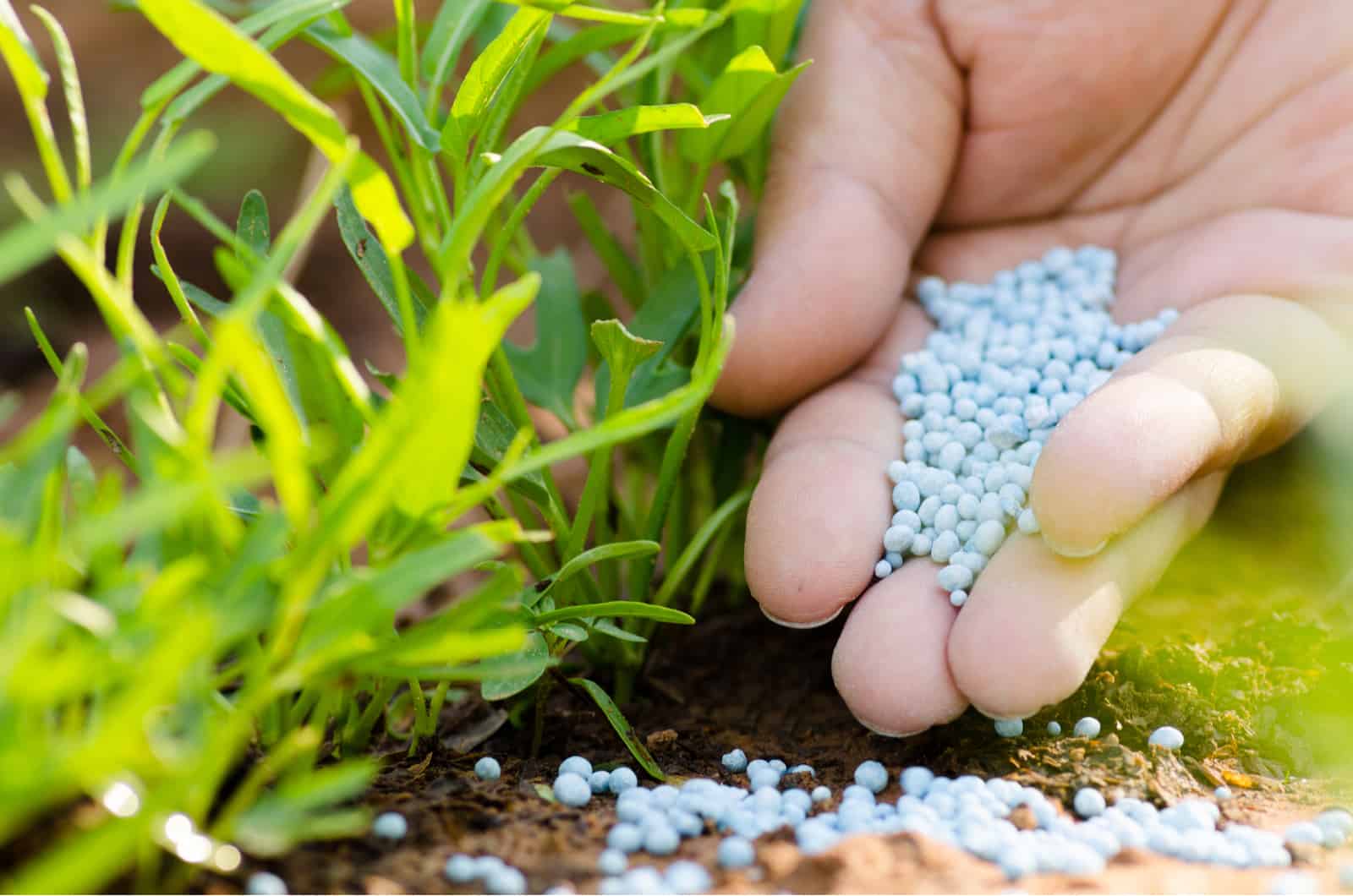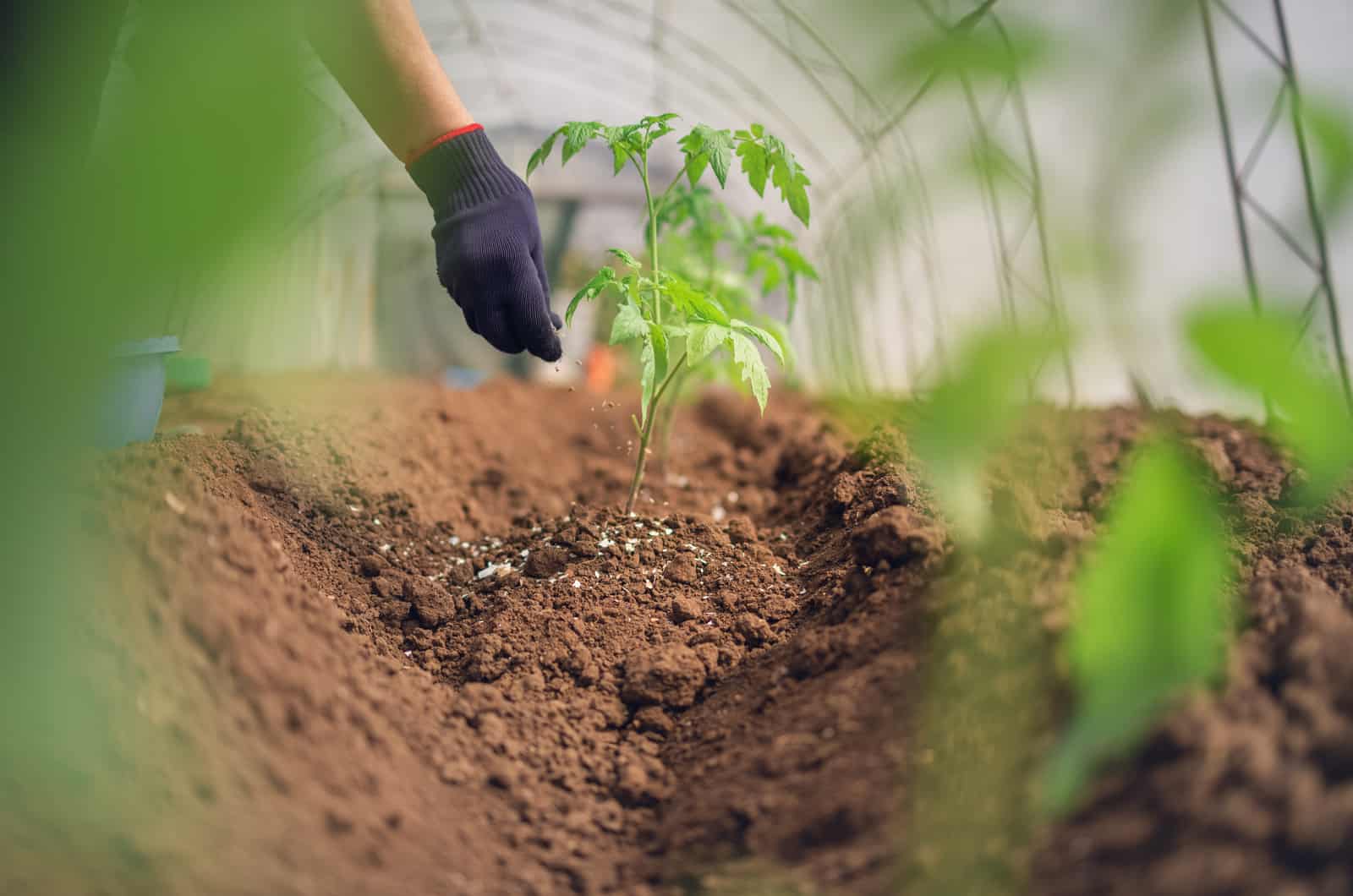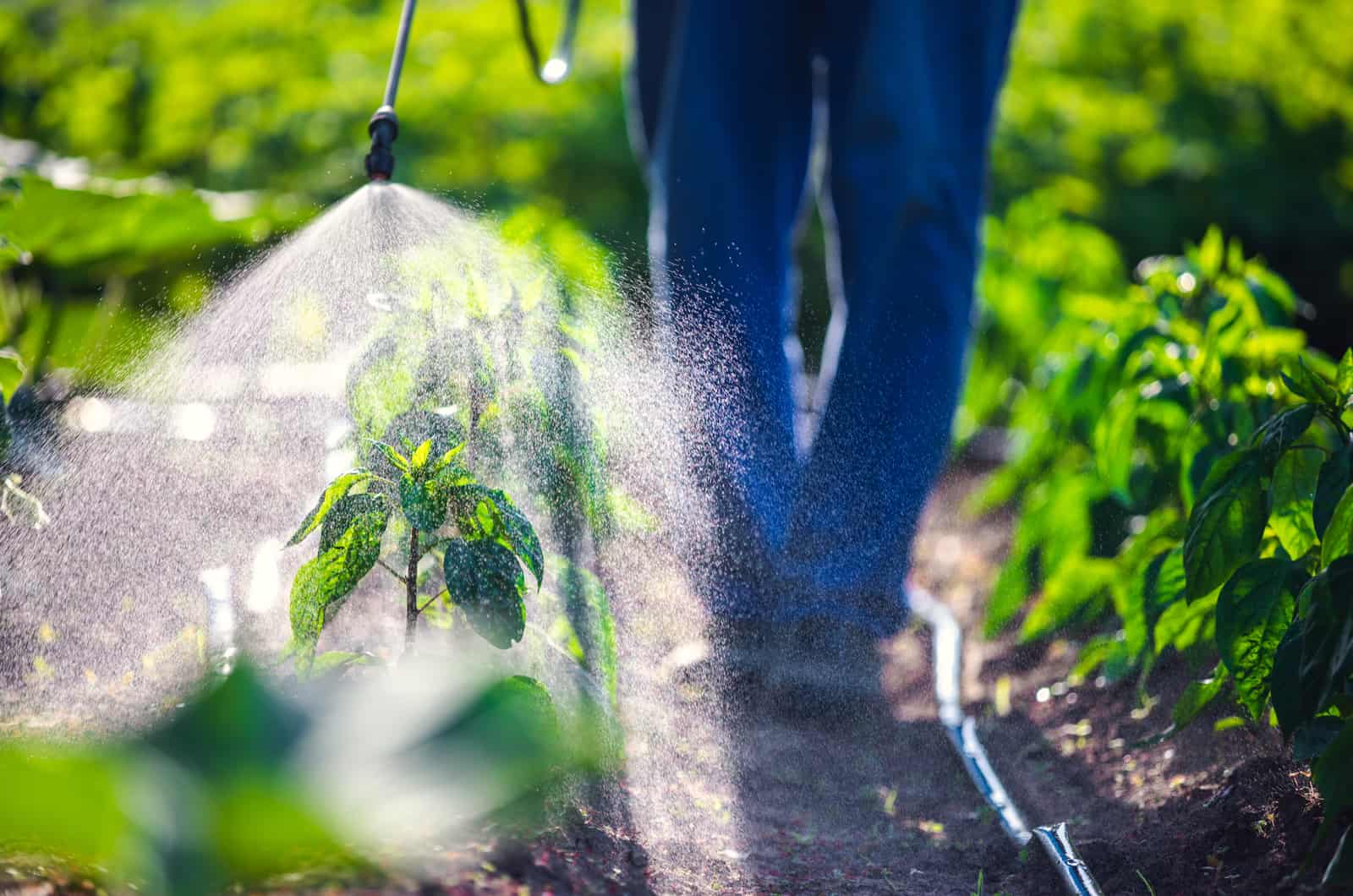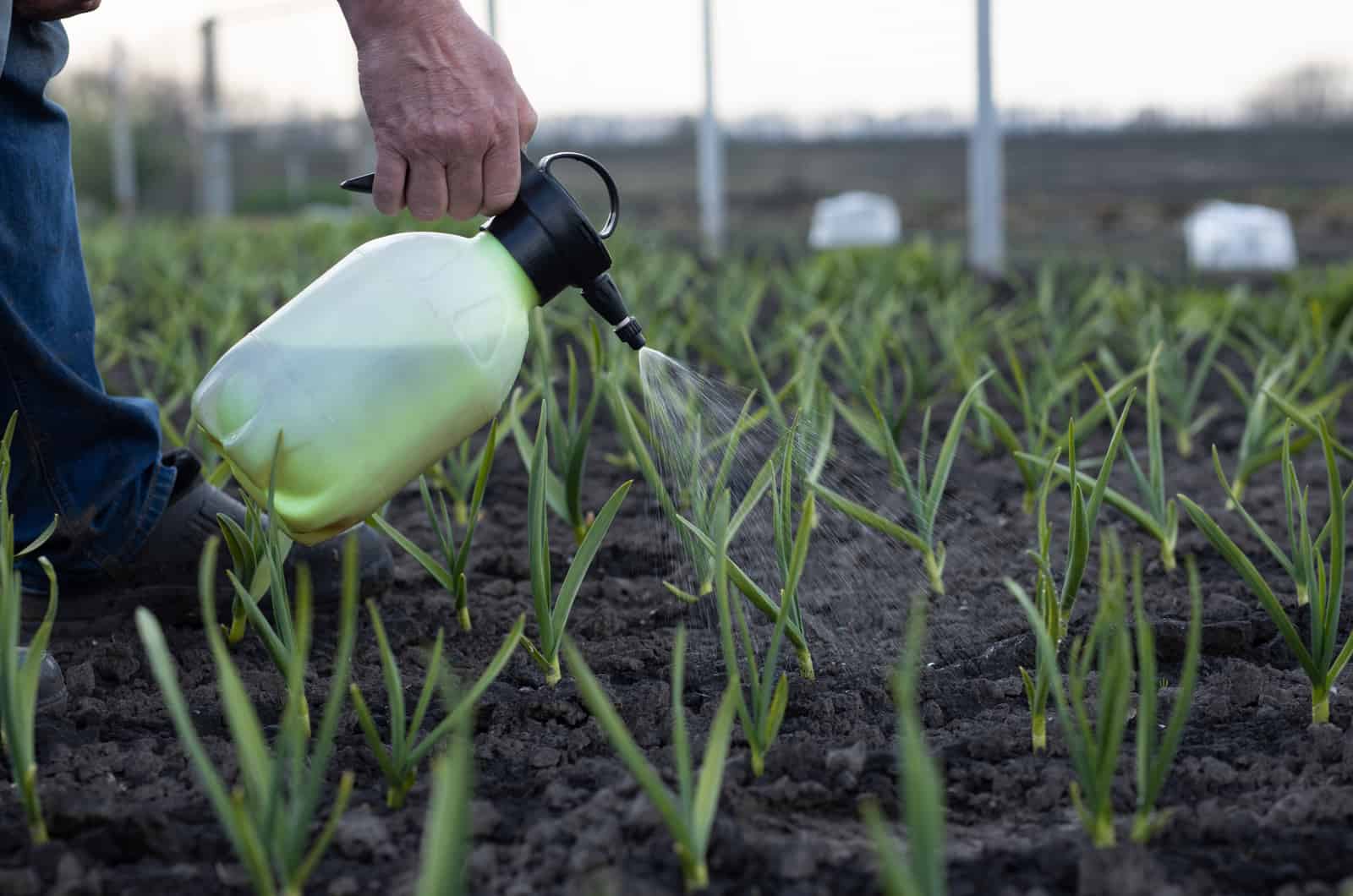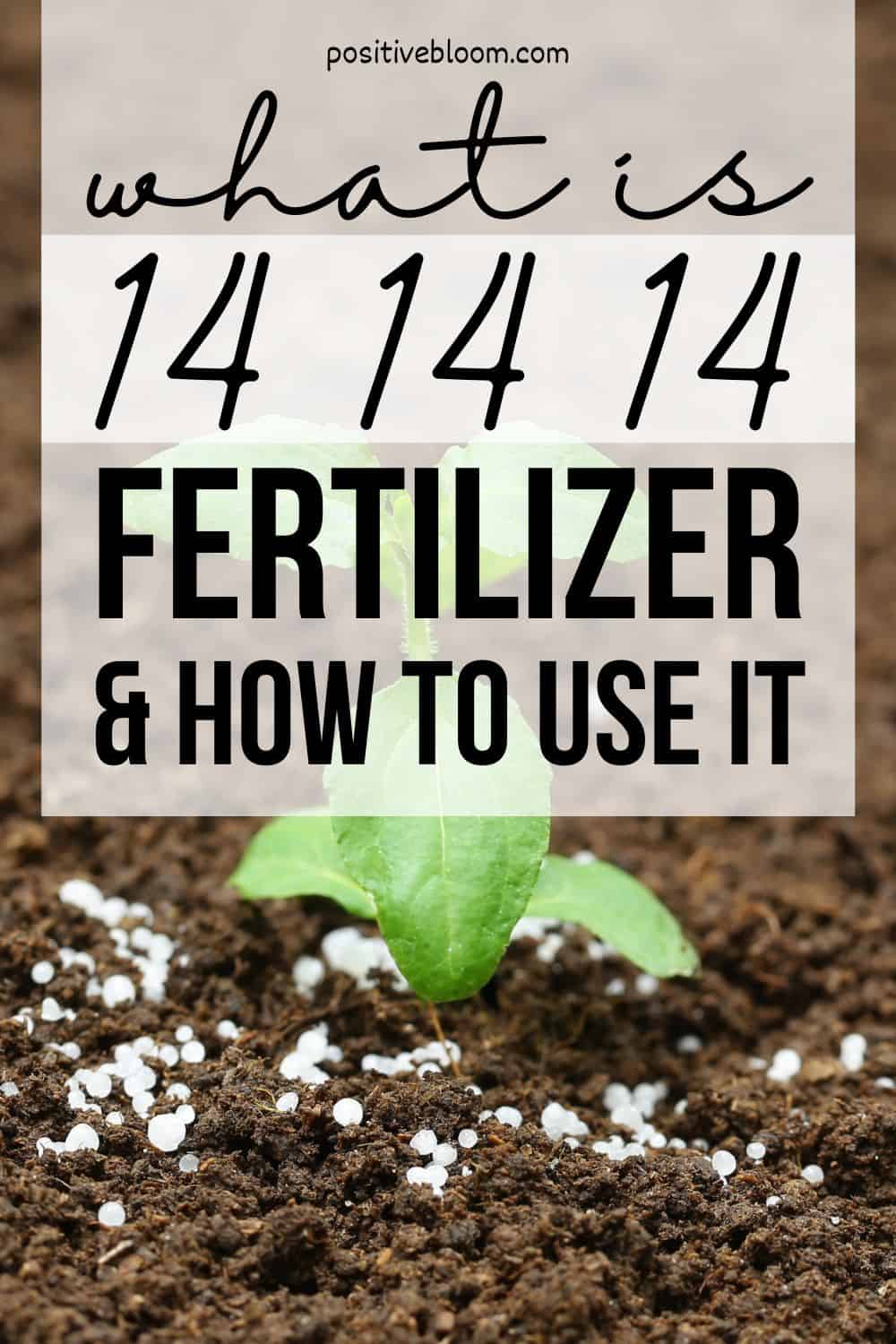The first time you enter the gardening world, you’ll get to know many different conditions your plants need. I assume you already know that plants need good lighting, appropriate humidity, temperature, etc. Still, there’s one thing many will skip explaining.
Fertilization is providing plants with food to improve their growth. Nowadays, many fertilizers are available, organic, chemical, granular, or liquid. Therefore, it’s essential to get to know each term so you can choose the appropriate fertilizer.
Today, I am going to present to you the 14 14 14 fertilizer. This type of fertilizer provides plants (vegetables, potted plants, and flowers) and lawns with a healthy boost.
It’s essential to learn how, when, and where to use this fertilizer. Bearing this in mind, I have prepared all the information you need to know about 14 14 14 fertilizer.
Let’s see!
What Is 14 14 14 Fertilizer?
Triple 14 fertilizer is also known as a complete fertilizer. It contains minerals your plant needs to grow quickly and healthily.
Understanding how the triple 14 fertilizer can benefit your plants is essential because overfertilization can cause unnecessary problems.
The great thing about triple 14 is that it can be mixed with organic fertilizer.
What Is The Meaning Of 14 14 14 In Fertilizer?
These numbers aren’t randomly picked; they are related to the distribution of minerals the fertilizer contains, and triple 14 means that the minerals are equally distributed.
This fertilizer contains 14% nitrogen, 14% phosphorus, and 14% potassium. I’m sure you’re wondering what’s with the remaining 58%. Different nutrients or minerals are distributed in those 58%, depending on the fertilizer brand.
For example, some manufacturers add micronutrients like iron, calcium, manganese, sulfur, or chlorine to 14 14 14.
These numbers will also help you compare and understand which type of fertilizer you need after performing a soil test.
Benefits Of 14 14 14 Fertilizer
Why you should use this fertilizer and what its benefits are, are the questions you need answers to.
Each ingredient within this fertilizer has its own function and is beneficial.
Let’s get into the details!
Nitrogen (N)
In case you ask, yes, nitrogen is a gas. However, the specialists have successfully bonded nitrogen with other chemicals to help plants absorb nitrogen’s nutritional value.
Nitrogen is a component of chlorophyll that is a must for photosynthesis. Additionally, it’s found in plants’ proteins and the compounds that produce energy.
A fascinating fact is that nitrogen is a part of a plant’s DNA. I think you’ve now concluded why you should pay attention to ensure the appropriate concentration of nitrogen in your plant.
Phosphorus (P)
Phosphorous is one of the main components found in plant cells, and it helps them divide and develop the growing tip of your plant. It improves the growth of your plant and protects it from harsh winters.
Additionally, it encourages the tillering of the plants, causing the stems to branch and produce side shoots.
If your plant lacks phosphorus (phosphate), you’ll notice a couple of signs like wilting and stunted plant growth. Find out more about nutrient deficiencies of phosphorus in plants here.
Potassium (K)
There’s a list of benefits of potassium. Let’s see.
• Essential for plant growth, promotes photosynthesis;
• Increases the protein intake of your plant;
• Promotes root growth and protects it from drying (adjusts the amount of water vapor, helps in CO2 and oxygen circulation).
If your plant lacks potassium, it’ll droop and have a wilting appearance, and the young leaves will have smaller leaf blades.
There are potassium-based fertilizers available, and you can find them under the name muriate of potash.
When To Use It
It’s essential to understand when you need this kind of fertilizer. For example, an npk ratio of 10-10-10 sometimes won’t be enough. You’ll then need to add a fertilizer with higher concentrations of minerals.
If your plant starts wilting or stops growing, I suggest using this fertilizer. A controlled appliance will undoubtedly revive your plant.
The Application Rate
Most fertilizers have the information on their box when it comes to the application rate.
However, if this is unavailable, there’s a way to calculate it on your own. The industry standard is 1 lb of fertilizer per 1000 square feet.
This is a formula you should follow, 1 lb fertilizer x 1000 sq ft = 1000. Now, turn the npk ratio to decimals. For example, if the nitrogen ratio is 14, use 0.14 for the formula.
1000 / 0.14 = 7.1
Therefore, to cover 1000 square feet, you’ll need 7.1 lb of 14 14 14 fertilizer.
It shouldn’t be a problem to calculate, even if you aren’t into math much. Multiply 1 lb of fertilizer by square feet, and divide the result by the nitrogen number (converted to decimals).
A piece of cake, right?
How Is 14 14 14 Fertilizer Used?
Suppose you decide to use this fertilizer; you’ll have to know how to use it.
Let’s get some work done!
First, you need to decide which application method to use. You can choose between a liquid sprayer or a granular spreader.
Dilute your fertilizer (learn how to dilute it in the following section).
Please pay attention when setting the granular spreader as you want it to be evenly spread.
To determine how much fertilizer you’ll need, you should perform a soil test.
Apply the fertilizer to your crops and plants. The amount of fertilizer you’ll need should be calculated using the formula above.
How To Dilute Triple 14
Diluting triple 14 mainly depends on the amount of fertilizer you decide to use. Check the label on the fertilizer package as it tells you the exact amount of water you should add to the fertilizer.
Frankly, I have never read the labels for this fertilizer, and I add 2 – 3 cups of fertilizer to 1 gallon of water.
You should wait for about 24 hours for the fertilizer to dissolve to get the best results.
Here’s a video on how to apply this fertilizer:
Safety Precautions
Like most other products, 14 14 14 fertilizer needs to be handled with precautions.
I have made a list of 6 precaution measures to keep you and your plants safe.
Here’s the list:
1. Pay close attention to the dosage. Adding too much fertilizer or overfertilization can lead to burning, stunted growth, and many other issues you certainly don’t need;
2. Light fertilizing or under fertilizing leads to discoloration of the plant, affects root growth, and diminishes flowering;
3. Gloves! Always use gloves before applying the fertilizer. Nitrogen contains toxic elements, so you shouldn’t come in contact with it;
4. Pay attention to where you store the fertilizer after usage. Keep 14 14 14 away from small children and pets;
5. Always wash your hands before using this fertilizer as it may cause chemical burns;
6. I suggest you wear safety glasses to prevent the fertilizer getting into your eyes (trust me, you don’t want that).
14-14-14 Fertilizer And Potted Plants
If you want to apply this fertilizer to potted plants, you’ll need one gardening tool, such as a rake (smaller version).
Take some fertilizer with your hands and place it around the potted plant. Rake it in to make sure it’s evened. This method will allow the roots to absorb all the nutrients the fertilizer contains.
After application, water the soil thoroughly.
That’s it!
What Is The Best Time To Apply It?
The time of day plays an essential role in applying this fertilizer.
For example, applying triple 14 fertilizer early in the morning can cause lawn burning, due to the strong chemicals.
I suggest you apply a slow-release fertilizer in the late afternoon or early evening.
Most gardeners water their lawns in the early evening. The humidity during the night increases, the soil retains water, and water gradually evaporates as the day turns to night when you come in.
This fertilizer should be applied to dry grass (or as dry as possible) because the application of triple 14 on wet soil will have the opposite (adverse) effects wanted.
Watered grass becomes sticky, and pieces of fertilizer stick to grass blades and can’t reach the soil. The sun will help the fertilizer burn the grass and prevent beneficial minerals from entering the soil.
On the other hand, dry grass enables the fertilizer to pass through the grass blades and reach the soil (that’s where it should be).
How Often Should It Be Applied?
Triple 14 is a slow-release fertilizer, and one application per growing season should work well (for potted plants).
However, some manufacturers claim that the fertilizer continues to feed for a couple of months. Therefore, applying triple 14 fertilizer every 3 to 4 months will have the best results.
On the other hand, you should only apply this fertilizer once per growing season to your lawn. Don’t repeat the process as you can damage the lawn bed and burn the plants.
Price
The price depends on the manufacturer and the quantity you decide to purchase. Luckily, there’s a wide range of prices.
You might need to pay more for water-soluble fertilizers.
You will have to pay anywhere between $15 and $160.
Best 14 14 14 fertilizer
I’ve made a list of things that the best triple 14 fertilizer should have:
• Controlled release: Controlled-release fertilizers allow you to calculate the time needed for complete diffusion, and you can’t calculate the time when using slow-release fertilizers.
• The possibility to apply it to a range of plants: You can apply it to plants grown in hanging baskets, vegetable gardens, flower beds, or potted plants.
• Granules: Granules need the right temperature to activate (a high temperature allows the fertilizer to release minerals). The granule won’t activate in lower temperatures. This is perfect as you apply it during the growing season, which is in summer.
• It should last for a long time.
14 14 14 NPK Ratio And Plants
You can use this fertilizer for plants like orchids, eggplants, roses, rice, trees, etc.
I have to mention that each plant needs a specific amount of fertilizer, so stick to the rules to avoid overfertilization.
14 14 14 And Succulents
I use triple 14 granular fertilizer for my succulents. I’ve tried using many fertilizers, but this type gave the best results.
Succulents are low-maintenance plants and don’t need much fertilizing. You’ll only need 1 tsp of triple 14 for each succulent.
I use the granular version because I don’t want to damage my succulents’ delicate roots.
14 14 14 And Tomatoes
The roots of tomatoes are the ones that need plant food.
Dissolve about 4 tsp of this fertilizer and apply it to the plant.
I’ve never had better tomatoes than when I used this fertilizer.
Pro tip: Add bone meal to your tomatoes too.
FAQs
How is monosodium glutamate used as fertilizer?
The amount of monosodium glutamate you should apply depends on the age of the plant. If you have a young and small plant, add 1 to 2 tbs of monosodium glutamate to 1.32 gallons of water, and you can apply it twice a month. On the other hand, if your plants are older (over 1), add 5 tbs to 0.26 gallons of water and apply it twice a month.
What is the difference between 14 14 14 and Osmocote?
14 14 14 and Osmocote have different npk fertilizer ratios. Osmocote has a 19 6 12 npk ratio; however, Osmocote plus has a 15 9 12 npk ratio, and sometimes it can have 14 14 14 npk radio.
What is the best type of fertilizer for me?
The fertilizer you should use mainly depends on the minerals your soil needs. That’s why it’s essential to perform a soil test before purchasing any fertilizer. Pay attention to the npk ratio and the quality of the product. For example, if your soil lacks nitrogen, you can apply urea fertilizer with an npk ratio of 46 0 0 or you can use other balanced fertilizers such as triple 17 fertilizer.
Wrapping Up
We all want the best for our lawns and plants. That’s why we have to pay attention to feeding; the right amount, the right type.
Many types of fertilizers are available on the market; now that you know the benefits of 14 14 14, there’s no reason not to add it to your wishlist.
Apply it using our methods, and your lawn and plants will be thriving in no time.
Until next time!
Like this post? Share or pin it for later!

